 W
WThe Moscow Art Theatre was a theatre company in Moscow. It was founded in 1898 by the seminal Russian theatre practitioner Konstantin Stanislavski, together with the playwright and director Vladimir Nemirovich-Danchenko. It was conceived as a venue for naturalistic theatre, in contrast to the melodramas that were Russia's dominant form of theatre at the time. The theatre, the first to regularly put on shows implementing Stanislavski's system, proved hugely influential in the acting world and in the development of modern American theatre and drama.
 W
WThe Moscow Art Theatre production of Hamlet in 1911–12, on which two of the 20th century's most influential theatre practitioners—Konstantin Stanislavski and Edward Gordon Craig—collaborated, is particularly important in the history of performances of Hamlet and of 20th-century theatre in general.
 W
WThe Moscow Art Theatre production of The Seagull in 1898, directed by Konstantin Stanislavski and Vladimir Nemirovich-Danchenko, was a crucial milestone for the fledgling theatre company that has been described as "one of the greatest events in the history of Russian theatre and one of the greatest new developments in the history of world drama." It was the first production in Moscow of Anton Chekhov's 1896 play The Seagull, though it had been performed with only moderate success in St. Petersburg two years earlier. Nemirovich, who was a friend of Chekhov's, overcame the writer's refusal to allow the play to appear in Moscow after its earlier lacklustre reception and convinced Stanislavski to direct the play for their innovative and newly founded Moscow Art Theatre (MAT). The production opened on 29 December [O.S. 17 December] 1898. The MAT's success was due to the fidelity of its delicate representation of everyday life, its intimate, ensemble playing, and the resonance of its mood of despondent uncertainty with the psychological disposition of the Russian intelligentsia of the time. To commemorate this historic production, which gave the MAT its sense of identity, the company to this day bears the seagull as its emblem.
 W
WAlexander Ivanovich Platonov was a Russian and Soviet stage actor and reader in drama, better known under his stage name Adashev (Адашев) and associated with the Moscow Art Theatre, in 1898–1913.
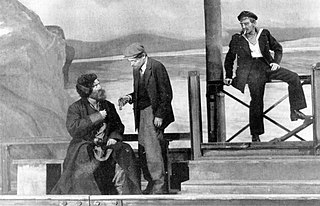 W
WArmoured Train 14–69 is a 1927 Soviet play by Vsevolod Ivanov. Based on his 1922 novel of the same name, it was the first play that he wrote and remains his most important. In creating his adaptation, Ivanov transformed the passive protagonist of his novel into an active exponent of proletarian ideals; the play charts his journey from political indifference to Bolshevik heroism. Set in Eastern Siberia during the Civil War, it dramatises the capture of ammunition from a counter-revolutionary armoured train by a group of partisans led by a peasant farmer, Nikolai Vershinin. It is a four-act play in eight scenes that features almost 50 characters; crowd scenes form a prominent part of its episodic dramatic structure. Near the end of the play a Chinese revolutionary, Hsing Ping-wu, lies down on the railway tracks to force the armoured train to stop.
 W
WAlexander Rodionovich Artemyev was a Russian stage actor, associated with Moscow Art Theatre and better known under his stage name Artyom (Артём).
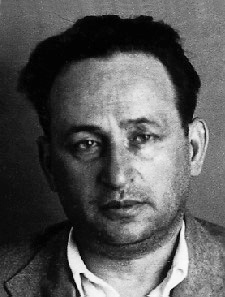 W
WYacov Osipovich Boyarsky was a soviet theatre, trade union and community activist. In 1929—1936 he headed the Trade Union of Art Workers, in 1937—1939 he was the director of the Moscow Art Theatre.
 W
WNadezhda Nikolayevna Bromley was a Russian and Soviet actress, theatre director, poet, short story writer and playwright. In 1932, she was honored as the Meritorious Artist of RSFSR.
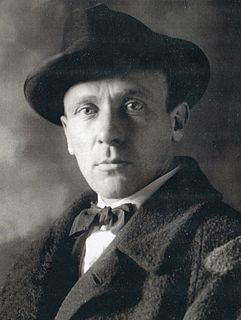 W
WMikhail Afanasyevich Bulgakov was a Russian writer, medical doctor and playwright active in the first half of the 20th century. He is best known for his novel The Master and Margarita, published posthumously, which has been called one of the masterpieces of the 20th century.
 W
WAnton Pavlovich Chekhov was a Russian playwright and short-story writer who is considered to be one of the greatest writers in the world. His career as a playwright produced four classics, and his best short stories are held in high esteem by writers and critics. Along with Henrik Ibsen and August Strindberg, Chekhov is often referred to as one of the three seminal figures in the birth of early modernism in the theatre. Chekhov was a doctor by profession. "Medicine is my lawful wife", he once said, "and literature is my mistress."
 W
WMikhail Aleksandrovich "Michael" Chekhov was a Russian-American actor, director, author and theatre practitioner. He was a nephew of the playwright Anton Chekhov and a student of Konstantin Stanislavski. Stanislavski referred to him as his most brilliant student.
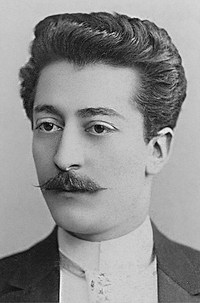 W
WMikhail Yegorovich Darski was a Tiflis-born Russian actor, theatre director and reader in drama.
 W
WNikolai Demidov is Russian Theatre practitioner. One of the first three teachers of the Stanislavski's system, trained and officially recognized by Konstantin Stanislavski.
Boris Georgiyevich Dobronravov was a Russian and Soviet actor, associated with the Moscow Art Theatre.
 W
WMaria Nikolayevna Krasovskaya-Kalitinskaya was a Russian actress, theatre director and reader in drama, better known under her stage name Maria Germanova (Германова).
 W
WThe Green Ring is a four-act play by Zinaida Gippius written in January 1914 and premiered at the Alexandrinsky Theatre on 18 February 1915, directed by Vsevolod Meyerhold. The Moscow Art Theatre production, directed by Vakhtang Mchedelov, opened on 7 December 1916. The play was first published in Petrograd in 1916 by the Ogni Publishers.
 W
WLiubov Yakovlevna Gurevich was a Russian editor, translator, author, and critic. She has been described as "Russia's most important woman literary journalist." From 1894 to 1917 she was the publisher and chief editor of the monthly journal The Northern Herald, a leading Russian symbolist publication based in Saint Petersburg. The journal acted as a rallying-point for the Symbolists Dmitry Merezhkovsky, Zinaida Gippius, Fyodor Sologub, Nikolai Minsky, and Akim Volynsky. In 1905 she joined the Moscow Art Theatre (MAT) as a literary advisor. She worked as an advisor and editor for the seminal Russian theatre practitioner Konstantin Stanislavski for the next 30 years and influenced his writing more than anyone else. Gurevich and Stanislavski had been writing to one another since the MAT's first tour to St Petersburg and became close friends.
 W
WOlga Gzovskaya (Russian: О́льга Влади́мировна Гзо́вская; 10 October 1883 – 2 July 1962) was a Russian Empire and Soviet theater and film actress.
 W
WLydia Mikhaylovna Koreneva was a Russian, Soviet stage actress associated with the Moscow Art Theatre.
 W
WLeonid Mironovich Leonidov was a Soviet and Russian actor, director and pedagogue. People's Artist of the USSR (1936).
 W
WAnton Michailovič Milenin is a Russian theatre actor, director and teacher who has worked in Italy and Russia for more than fifteen years.
 W
WMoscow Hermitage Garden, a popular recreation spot, is a park in the central part of Moscow, Russia on Karetny Ryad Street. It is known for its cultural attractions and adjacent theaters. Regular events include opera, ballet and concerts.
 W
WIvan Mikhailovich Moskvin was a Russian actor and People's Artist of the USSR. He became director of the Moscow Art Theatre in 1943. He was a student in the Moscow Philharmonic Society from 1893 to 1896. He also performed in the Yaroslavl company and the Korsh company in Moscow.
 W
WAnissa Naouai is an American journalist and former television presenter. She is the CEO of Maffick Media, a Berlin-based digital media company with Russian links, as of February 2019.
 W
WVladimir Ivanovich Nemirovich-Danchenko, was a Soviet and Russian theatre director, writer, pedagogue, playwright, producer and theatre administrator, who founded the Moscow Art Theatre with his colleague, Konstantin Stanislavski, in 1898.
 W
WNikolai Afanasyevich Podgorny was a Moscow-born Russian, Soviet actor and later reader in drama, associated with the Moscow Art Theatre.
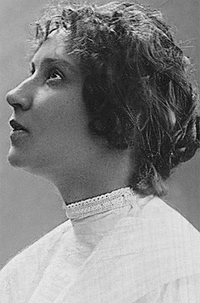 W
WMaria Lyudomirovna Petrovskaya was a Russian stage actress associated with the Moscow Art Theatre, better known under her stage name Roksanova (Роксанова).
 W
WAlexander Akimovich Sanin was a Russian actor, director and acting teacher. He was a founder member of the Moscow Art Theatre and during his career directed plays, operas, and films.
 W
WMargarita Georgiyevna Savitskaya was a Russian stage actress and in her later years a reader in drama, associated with the Moscow Art Theatre (MAT), a founding member of the original Stanislavski troupe.
 W
WKirill Semyonovich Serebrennikov is a Russian stage and film director, and theatre designer. Since 2012, he has been the artistic director of the Gogol Center in Moscow. He has been described as one of Russia's leading theatre directors.
 W
WThe Stanislavski and Nemirovich-Danchenko Moscow Academic Music Theatre is a music theatre in Moscow.
 W
WKonstantin Sergeyevich Stanislavski was a seminal Soviet and Russian theatre practitioner. He was widely recognized as an outstanding character actor and the many productions that he directed garnered him a reputation as one of the leading theatre directors of his generation. His principal fame and influence, however, rests on his 'system' of actor training, preparation, and rehearsal technique.
 W
WThis article offers a chronological list of productions directed by Konstantin Stanislavski. It does not include theatrical productions in which Stanislavski only acted.
 W
WStanislavski's system is a systematic approach to training actors that the Russian theatre practitioner Konstantin Stanislavski developed in the first half of the twentieth century. His system cultivates what he calls the "art of experiencing". It mobilises the actor's conscious thought and will in order to activate other, less-controllable psychological processes—such as emotional experience and subconscious behaviour—sympathetically and indirectly. In rehearsal, the actor searches for inner motives to justify action and the definition of what the character seeks to achieve at any given moment.
 W
WLeopold Antonovich Sulerzhitsky was a Russian theatre director, painter and pedagogue of Polish descent. He is associated with the Moscow Art Theatre and the household of Leo Tolstoy. Among his many students were Yevgeny Vakhtangov and Michael Chekhov.
 W
WBoris Mikhaylovich Sushkevich was a St. Petersburg-born Russian, Soviet actor, theatre director and reader in drama, honoured with the titles Meritorious Artist of RSFSR (1933) and People's Artist of RSFSR (1944).
 W
WOleg Pavlovich Tabakov was a Soviet and Russian actor and the Artistic Director of the Moscow Art Theatre. People's Artist of the USSR (1988).
 W
WAlla Konstantinovna Tarasova was a leading actress of Constantin Stanislavski's Moscow Art Theatre from the late 1920s onward.
 W
WTheatrical Novel, translated as Black Snow and A Dead Man's Memoir (Russian: Театральный роман, romanized: Teatralnyy roman is an unfinished novel by Mikhail Bulgakov. Written in first-person, on behalf of a writer Sergei Maksudov, the novel tells of the drama behind-the-scenes of a theatre production and the Soviet writers' world.
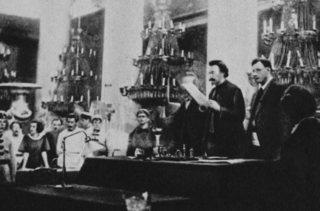 W
WThe Trial of the Socialist Revolutionaries was an internationally publicized political trial in Soviet Russia, which brought twelve prominent members of the anti-Bolshevik Party of Socialist Revolutionaries (PSR) before the bar. The trial, which took place in Moscow from June 8 to August 7, 1922, was ordered by Vladimir Lenin and is regarded as a precursor to the later show trials during the Stalin regime.
 W
WIlya Matveyevich Konkov was a Russian stage actor better known under his stage name Uralov (Уралов).
 W
WYevgeny Bagrationovich Vakhtangov was a Russian-Armenian actor and theatre director who founded the Vakhtangov Theatre. He was a friend and mentor of Michael Chekhov.
 W
WEkaterina Nikolaevna Vilkova is a Russian actress. She is known for her roles in Black Lightning (2009), Hipsters (2008), The PyraMMMid (2011), and Disney's The Last Bogatyr (2017) and its sequels.
 W
WAleksandr Leonidovich Vishnevsky was a Russian actor and one of the founding members of the Moscow Art Theatre.
 W
WAlexander Leonidovich von Fessing was a Yelisavetgrad-born Russian and Ukrainian, Soviet actor and theatre director, better known under his stage name Zagarov (Загаров).